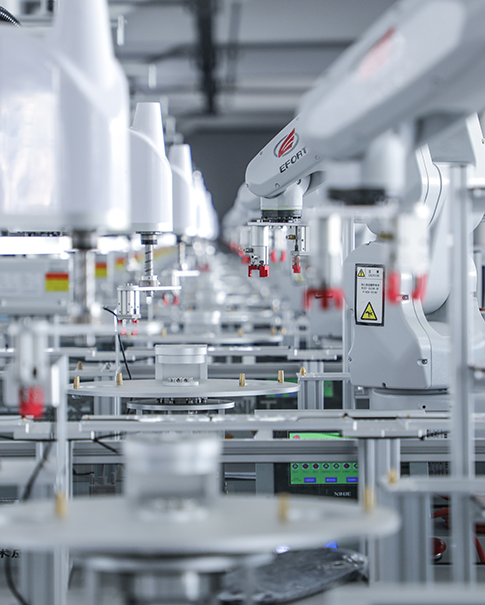Do Create a Realistic Roadmap: Start with Strategy, Not Technology
Implementing smart supply chains isn’t about chasing the shiniest tech—it’s about solving real business problems. Start by defining clear goals: Are you aiming to reduce inventory costs, improve delivery speed, or enhance demand forecasting? A well-crafted roadmap aligns technology with these objectives.
Prioritize pain points: Identify your supply chain’s biggest bottlenecks (e.g., frequent stockouts, long lead times) and tackle them first. For example, a retail giant struggling with warehouse inefficiencies might prioritize deploying robotic picking systems before investing in IoT sensors.
Adopt a phased approach: Break the journey into stages: Assess current processes,pilot solutions in low-risk areas (e.g., a single distribution center), Optimize based on feedback, and Scale successfully. This reduces disruption—companies that use phased rollouts see 30% faster ROI.
Gain stakeholder alignment: Involve everyone from warehouse workers to C-suite leaders. A shared vision ensures buy-in and helps anticipate challenges (e.g., resistance to new tools).
Do Build a Data-Driven Foundation: Connect the Dots Across Your Chain
Smart supply chains run on data. To unlock insights, ensure seamless data flow across every touchpoint:
Leverage IoT and automation: Install sensors on equipment, vehicles, and products to capture real-time data (e.g., machine performance, shipment locations, or inventory levels). A logistics company using GPS trackers reduced delivery delays by 25% by rerouting trucks in real time.
Avoid data silos: Choose integrated platforms (e.g., cloud-based ERP systems) that connect production, logistics, and sales data. This eliminates the “black box” effect—you’ll no longer wonder why a shipment is late or why production costs spiked.
Use analytics for proactive decisions: Turn raw data into action with AI-driven tools. Predictive analytics can forecast demand fluctuations, while prescriptive analytics suggests optimal inventory reorder points. Companies with strong data foundations achieve 15% better inventory accuracy.
Do Invest in Talent Upskilling: Technology Works Best with Skilled Teams
Even the smartest tools fail without capable people. Prioritize training to ensure your team can maximize new systems:
Tailor training to roles: Warehouse staff might need hands-on robotics training, while analysts require data visualization skills. A manufacturing plant that paired cobot deployment with operator training saw a 40% reduction in error rates.
Foster a culture of innovation: Encourage employees to experiment with new tools and share feedback. Frontline workers often spot inefficiencies that tech teams miss—their input can refine solutions and boost adoption.
Hire for the future: As roles evolve (e.g., data analysts, automation specialists), build a talent pipeline. Partner with universities or online courses to develop a skilled workforce ready for digital transformation.
Do Choose Scalable and Interoperable Technologies: Future-Proof Your Investments
Smart supply chains need flexibility. Avoid proprietary systems that lock you into one vendor—instead, opt for open architectures that adapt as your business grows:
Prioritize interoperability: Ensure new technologies (e.g., IoT platforms, robotics) can integrate with existing systems via APIs. A food manufacturer that used modular software added a new distribution center in weeks, not months.
Plan for scalability: Start small but think big. Cloud-based solutions are ideal—they let you scale storage, computing power, and user access without overhauls. Companies using scalable tech cut IT costs by 20% over three years.
Test for real-world usability: Run pilots with diverse stakeholders (e.g., suppliers, logistics partners) to ensure technologies work across your ecosystem. A seamless system shouldn’t just work in your warehouse—it should sync with your partners’ tools too.
Do Embrace Continuous Improvement: Smart Supply Chains Are Never “Done”
The supply chain landscape is always changing (hello, global disruptions and consumer demands!). Success requires ongoing refinement:
Monitor key metrics: Track KPIs like order fulfillment speed, inventory turnover, and system uptime. Regularly review dashboards to spot trends—e.g., a sudden spike in returns might signal a quality control issue in your smart sorting system.
Iterate based on feedback: Hold regular check-ins with teams and customers. Did a new AI forecasting tool miss holiday demand? Adjust the algorithm. Continuous iteration is how companies like Amazon stay ahead—they run 10,000+ experiments annually on their supply chains.
Stay updated on trends: Keep an eye on emerging tech (e.g., 5G for faster data transfer, blockchain for supply chain transparency). Being proactive about upgrades ensures your smart supply chain stays ahead of the curve, not behind it.
Conclusion: Turn “Dos” into Competitive Advantage
Implementing smart supply chains isn’t intimidating when you follow a strategic, people-first approach. Start with a clear roadmap, build on data, invest in your team, choose flexible tech, and never stop improving. The result? A supply chain that’s not just “smart”—but resilient, efficient, and ready for whatever the future throws its way.
 Network Supported
Network Supported















 32D Guomao Building, No.388, Hubin South Road, Siming District
32D Guomao Building, No.388, Hubin South Road, Siming District +86-18030235312
+86-18030235312 sales8@askplc.com
sales8@askplc.com